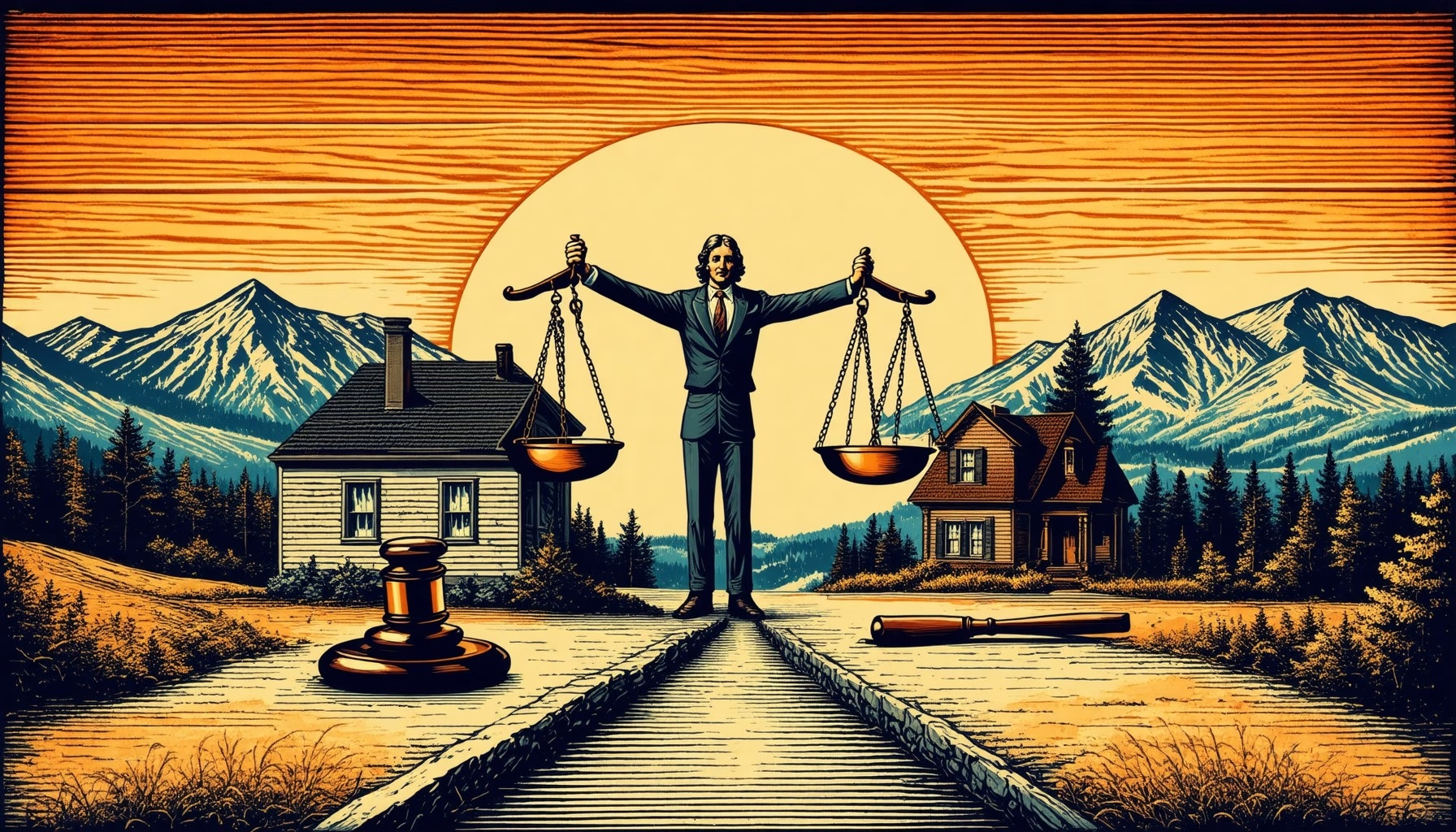Key Takeaways
- Understand Montana rental laws to effectively navigate tenant rights and landlord responsibilities.
- Document issues meticulously to strengthen your case when filing a complaint against your landlord.
- Utilize the Montana Tenant Rights Hotline for free advice on tenant rights and landlord obligations.
- Know your renters’ rights, including the right to a habitable home and protection against retaliation.
- Learn the eviction process and timelines to better prepare for potential disputes with landlords.
- Seek legal advice if necessary to ensure your rights are protected throughout the rental process.
Are you facing challenges with your landlord in Montana and wondering how to sue your landlord in Montana? Understanding your rights as a tenant is crucial, especially when navigating the complexities of Montana rental laws. This article will provide you with valuable insights into the legal framework that governs landlord-tenant relationships in the state, including an overview of Montana landlord responsibilities and the steps to file a complaint against a landlord. We will also explore whether it is worth it to sue a landlord, alternative dispute resolution options, and key renters’ rights under Montana law. Additionally, we will discuss effective strategies for dealing with difficult landlords and the eviction process, including how long it takes to evict a tenant in Montana. By the end of this guide, you will be equipped with the knowledge and resources needed to assert your rights and make informed decisions regarding your rental situation.
Understanding Montana Landlord-Tenant Laws
Montana landlord-tenant laws are designed to protect the rights of both landlords and tenants, ensuring a fair rental process. These laws outline the responsibilities of landlords, the rights of tenants, and the procedures for resolving disputes. Familiarizing yourself with these regulations is essential for anyone involved in a rental agreement in Montana.
Overview of Montana Landlord-Tenant Laws
The Montana Code Annotated (MCA) Title 70, Chapter 24 governs landlord-tenant relationships in the state. This legal framework covers various aspects, including lease agreements, security deposits, eviction procedures, and tenant rights. Understanding these laws can help tenants assert their rights and navigate potential disputes effectively.
Montana Landlord Responsibilities
Landlords in Montana have specific obligations under the law, which include:
- Maintaining the rental property in a habitable condition, ensuring it meets health and safety standards.
- Providing necessary repairs in a timely manner when issues arise.
- Respecting tenant privacy by providing proper notice before entering the property.
- Returning security deposits within the legally mandated timeframe, along with an itemized list of any deductions.
By understanding these responsibilities, tenants can better advocate for their rights and address any landlord complaints in Montana effectively.

How to File a Complaint Against a Landlord in Montana?
Filing a complaint against a landlord in Montana involves a series of steps designed to ensure that your concerns are addressed effectively. Understanding the process can empower you to take action and protect your rights as a tenant.
Steps to File a Complaint Against a Landlord in Montana
To initiate a complaint against your landlord, follow these essential steps:
- Document the Issue: Keep detailed records of the problem, including dates, times, and descriptions of incidents. This documentation will be crucial in supporting your complaint.
- Review Your Lease Agreement: Familiarize yourself with the terms of your lease to identify any violations by your landlord.
- Contact Your Landlord: Before escalating the issue, reach out to your landlord to discuss your concerns. Sometimes, a direct conversation can resolve the problem without further action.
- File a Formal Complaint: If the issue remains unresolved, you can file a complaint with the Montana Department of Justice or your local housing authority. Include all relevant documentation to support your case.
- Seek Legal Advice: If necessary, consult with a tenant rights attorney who can provide guidance tailored to your situation. Resources like the Legal Services Corporation can help connect you with legal aid.
Utilizing the Montana Tenant Rights Hotline
The Montana Tenant Rights Hotline is an invaluable resource for tenants facing issues with their landlords. This hotline offers free advice and assistance regarding tenant rights and landlord obligations under Montana rental laws. Here’s how to make the most of this resource:
- Call for Guidance: Reach out to the hotline to discuss your specific situation and receive tailored advice.
- Understand Your Rights: The hotline can help clarify your rights as a tenant and inform you of the appropriate steps to take.
- Access Additional Resources: The hotline can direct you to further resources, including legal aid services and local tenant organizations.
By following these steps and utilizing available resources, you can effectively address landlord complaints in Montana and ensure your rights are upheld.
What are the renters rights in Montana?
Renters’ rights in Montana are designed to protect tenants and ensure fair treatment in rental agreements. Here are key aspects of these rights:
- Right to Habitable Living Conditions: Tenants in Montana are entitled to a safe and habitable living environment. This includes functioning plumbing, heating, and electrical systems, as well as protection from pests and mold. Landlords are legally required to maintain these conditions as per Montana Code Annotated (MCA) § 70-24-303.
- Right to Timely Repairs: Tenants have the right to request repairs and expect them to be addressed promptly. If a landlord fails to make necessary repairs within a reasonable time frame, tenants may have the right to withhold rent or seek legal remedies.
- Protection Against Retaliation: Montana law prohibits landlords from retaliating against tenants who exercise their rights, such as filing complaints about unsafe conditions or joining tenant unions. This is outlined in MCA § 70-24-442.
- Security Deposits: Landlords can require security deposits, but they must return the deposit within 30 days after the lease ends, minus any lawful deductions for damages or unpaid rent, as stated in MCA § 70-25-201.
- Notice Requirements: Landlords must provide proper notice before entering a rental unit, typically 24 hours, except in emergencies. This is to ensure tenants’ privacy and security.
- Lease Agreements: All rental agreements must be in writing if they exceed a duration of one year. This protects both parties by clearly outlining the terms of the lease, including rent, duration, and responsibilities.
For more detailed information on renters’ rights, tenants can refer to resources provided by the Consumer Financial Protection Bureau or consult legal aid organizations. Understanding these rights can empower tenants and help them navigate their rental situations effectively.
Resources for understanding the Montana landlord-tenant handbook
The Montana landlord-tenant handbook is an essential resource for both tenants and landlords, providing comprehensive information on rights and responsibilities. Here are some valuable resources:
- Nolo’s legal guides: Offers a wealth of information on landlord-tenant laws, including practical advice on navigating disputes.
- Legal Services Corporation: Provides access to legal aid and resources for tenants facing issues with their landlords.
- Understanding legal tenant rights: A guide that outlines tenant protections and landlord obligations under Montana rental laws.
- Rental property rights: This resource details common violations by landlords and the rights tenants have in these situations.
What are the renters rights in Montana?
Understanding your rights as a renter in Montana is crucial for ensuring a fair and safe living environment. Montana rental laws provide various protections for tenants, helping to safeguard against unfair treatment by landlords. Here are some key renters’ rights under Montana rental laws:
- Right to a Habitable Home: Landlords are required to maintain rental properties in a habitable condition, ensuring that essential services such as heat, water, and electricity are functioning properly.
- Right to Privacy: Tenants have the right to privacy in their rented homes. Landlords must provide reasonable notice before entering the property, typically 24 hours, unless there is an emergency.
- Right to Fair Treatment: Discrimination based on race, color, religion, sex, national origin, familial status, or disability is prohibited under federal and state laws.
- Right to Security Deposits: Montana law regulates security deposits, limiting the amount landlords can charge and requiring them to return the deposit within a specified timeframe after the lease ends.
- Right to Organize: Tenants have the right to organize and participate in tenant unions or associations to advocate for their rights and interests.
For more detailed information on your rights, you can refer to the Montana landlord-tenant handbook, which outlines the responsibilities of both landlords and tenants.
Resources for understanding the Montana landlord-tenant handbook
Accessing reliable resources is essential for understanding your rights as a tenant in Montana. Here are some valuable resources to help you navigate Montana rental laws:
- Montana Department of Justice: The official state website provides comprehensive information on landlord-tenant laws, including rights and responsibilities. Visit the Consumer Financial Protection Bureau for additional financial resources for renters.
- Local Housing Authorities: Contact your local housing authority for guidance on tenant rights and available support services. They can assist with issues related to landlord complaints in Montana.
- Montana Tenant Rights Hotline: Utilize the Montana tenant rights hotline for immediate assistance and advice on legal matters related to your tenancy.
- Legal Aid Organizations: Organizations such as the Nolo’s legal guides offer resources and legal assistance for tenants facing disputes with landlords.

How long does it take to evict a tenant in Montana?
Understanding the eviction process in Montana is crucial for both landlords and tenants. The timeline for eviction can vary significantly based on several factors, including the reason for eviction, the tenant’s response, and the court’s schedule. Here’s a detailed breakdown of the eviction timeline in Montana:
- Notice to Vacate: The landlord must provide the tenant with a written notice to vacate. The notice period varies:
- For non-payment of rent, a 14-day notice is required.
- For lease violations, a 30-day notice is typically given.
- For month-to-month leases, a 30-day notice is also standard.
- Filing for Eviction: If the tenant does not comply with the notice, the landlord can file an eviction lawsuit (unlawful detainer) in the local district court. This process can take a few days to a week to initiate.
- Court Hearing: After filing, a court date will be set, usually within 10 to 20 days. Both parties will have the opportunity to present their case.
- Judgment: If the court rules in favor of the landlord, a judgment will be issued, allowing the landlord to proceed with eviction. This can take an additional week or two.
- Execution of Eviction: If the tenant does not leave voluntarily after the judgment, the landlord can request a writ of execution, which allows law enforcement to remove the tenant. This process can take another week or more, depending on local law enforcement schedules.
Overall, the entire eviction process in Montana can take approximately 30 to 90 days, depending on the circumstances. It’s important for landlords to follow the legal procedures carefully to avoid delays. For authoritative guidance, landlords and tenants can refer to the official U.S. government site and local legal resources. Additionally, consulting with a legal professional can provide clarity on specific cases and ensure compliance with state laws.
Understanding the 3-day eviction notice in Montana
The 3-day eviction notice in Montana is specifically applicable in cases of non-payment of rent. This notice serves as a formal demand for the tenant to pay overdue rent or vacate the premises within three days. If the tenant fails to comply, the landlord can proceed with filing an eviction lawsuit. It’s essential for landlords to ensure that this notice is delivered correctly, as improper delivery can delay the eviction process.
For more information on tenant rights and obligations, you can explore resources such as the Understanding landlord rights and Legal tenant rights.
How long does it take to evict a tenant in Montana?
Understanding the eviction process in Montana is crucial for both landlords and tenants. The timeline for eviction can vary based on several factors, including the reason for eviction and the tenant’s response. Generally, the eviction process in Montana can take anywhere from a few weeks to several months, depending on the circumstances.
Overview of the eviction process in Montana
The eviction process typically begins when a landlord serves a notice to the tenant. This notice can vary in length depending on the reason for eviction, such as non-payment of rent or lease violations. After the notice period expires, if the tenant has not vacated the property, the landlord can file an eviction lawsuit in the local court. The court will then schedule a hearing, and if the landlord prevails, a judgment will be issued, allowing the landlord to proceed with the eviction.
Understanding the 3-day eviction notice in Montana
In Montana, a 3-day eviction notice is commonly used for non-payment of rent. This notice informs the tenant that they have three days to pay the overdue rent or vacate the premises. If the tenant fails to comply, the landlord can initiate legal proceedings. It’s important for tenants to understand their rights during this process, including the ability to contest the eviction in court. For more information on tenant rights, you can refer to the Montana tenant rights hotline and resources available through Nolo.
How to be a landlord in Montana?
Becoming a landlord in Montana involves understanding the legal framework that governs rental properties and ensuring compliance with Montana rental laws. This includes knowing your responsibilities and the rights of your tenants, which can help prevent disputes and foster a positive landlord-tenant relationship.
Essential guidelines for becoming a landlord in Montana
To successfully navigate the responsibilities of being a landlord in Montana, consider the following guidelines:
- Understand Rental Agreements: Draft clear and comprehensive rental agreements that outline the terms of the lease, including rent amount, due dates, and maintenance responsibilities.
- Comply with Safety Regulations: Ensure that your rental property meets all health and safety codes, including proper plumbing, electrical systems, and smoke detectors.
- Know Tenant Rights: Familiarize yourself with Montana tenant rights to avoid legal issues and maintain a respectful relationship with your tenants.
- Maintain the Property: Regularly inspect and maintain the property to ensure it remains habitable and address any tenant complaints promptly.
Compliance with Montana landlord-tenant laws and security deposits
Compliance with Montana landlord-tenant laws is crucial for avoiding legal disputes. Key aspects include:
- Security Deposits: Montana law limits security deposits to one month’s rent and requires landlords to return the deposit within 30 days after the tenant vacates, minus any lawful deductions.
- Eviction Procedures: Familiarize yourself with the proper eviction process, including the necessary notices and timelines, to ensure compliance and avoid potential lawsuits.
- Record Keeping: Maintain accurate records of all transactions, communications, and maintenance requests to protect yourself in case of disputes.




